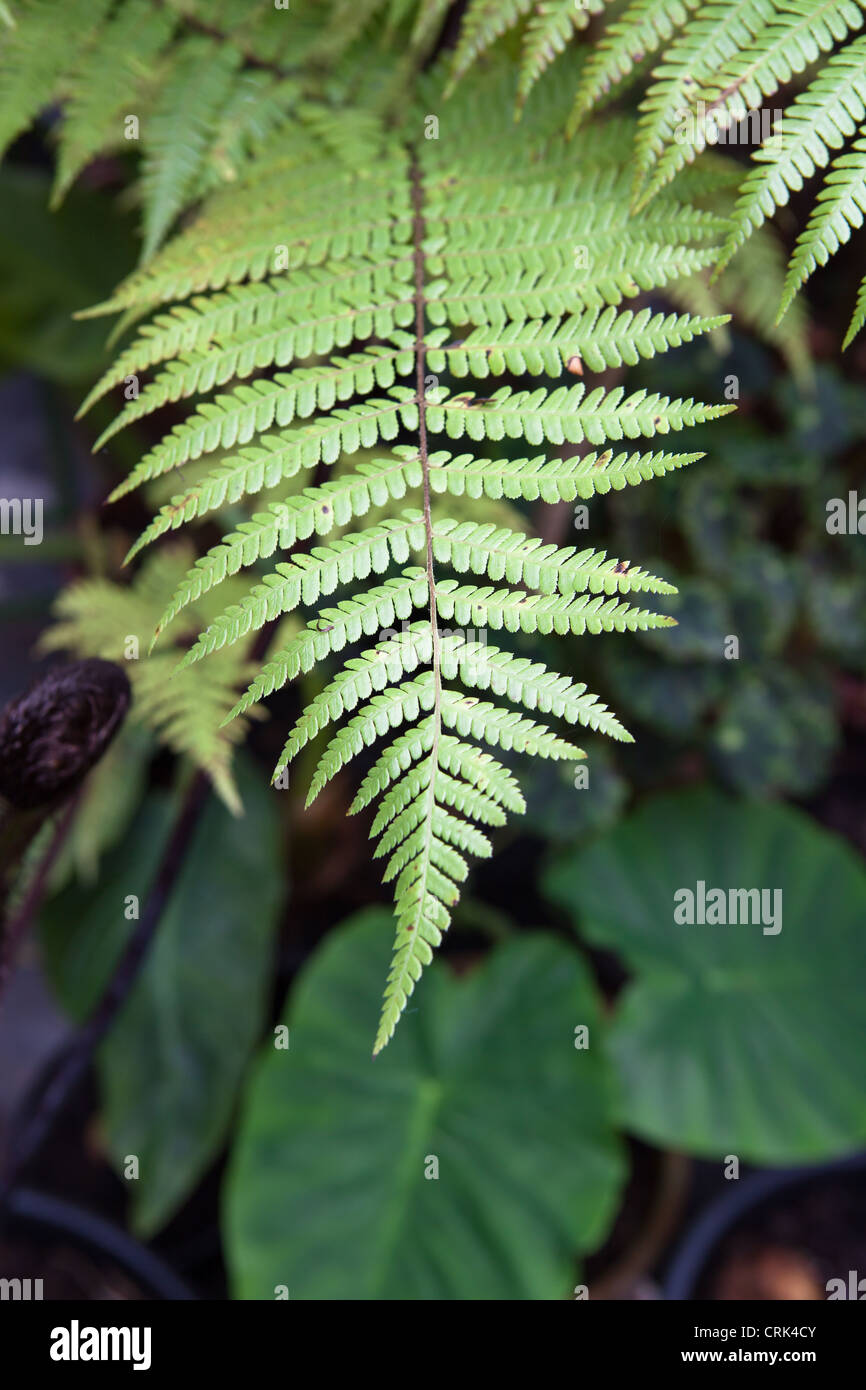
PlantFiles Pictures Dicksonia Species, Harsh Tree Fern, Rough Tree Fern, Wheki (Dicksonia
Cyathea Australis is a remarkable species of tree fern native to southeastern Australia, including Queensland, New South Wales, Victoria, Tasmania, and Norfolk Island. Its botanical name, Alsophila Australis, may sound intimidating, but its common name, the Rough Tree Fern, reflects its rugged yet captivating appearance.

Cyathea australis Rough Tree Fern The Seed Vine
| Blog | Tree Ferns - How to Grow and Care Guide Tree ferns are one of the most fascinating plants you can grow in Australia. With their ancient ancestry and tropical looks, they add a touch of exotic beauty to any garden, without needing to do much actual gardening at all.

1ft Hardy Tree Fern 'Dicksonia Antarctica' £41.99 Tree fern, Dicksonia antarctica, Ferns garden
C. australis is commonly known as the Rough Tree Fern due to the presence of adventitious roots, tubercles (knobbly bits) and masses of hair-like scales on its 'trunk'. The 'trunk' like structure on a tree-fern is actually a greatly enlarged rhizome!

PlantFiles Pictures Dicksonia Species, Harsh Tree Fern, Rough Tree Fern, Wheki (Dicksonia
It is known as the Rough Tree Fern due to the presence of shield-like plates (bases of old fronds), tubercles (knobbly bits) and masses of hair-like scales on its 'trunk'.

PlantFiles Pictures Rough Tree Fern (Cyathea australis) by kennedyh
Though these ferns may LOOK soft and luxuriant, most tree ferns have fairly rough fronds and these hairs/scales are not only NOT soft, they are also potent irritants. Getting these hairs or scales on one's skin or in one's eyes can be a very unpleasant experience.

Photographs of Australian Native Plants Cyathea australis australis (Rough Tree Fern) by
The Australian Tree Fern (Dicksonia antarctica) and Scaly Tree Fern (Cyathea cooperi) are two popular choices for different regions. The Australian Fern is hardy in USDA zones 9-11, while the Scaly Tree Fern is better suited for USDA zones 10-12. A tree fern is an excellent choice for an east facing garden.

PlantFiles Pictures Wheki, Rough Tree Fern, Harsh Tree Fern (Dicksonia squarrosa) by palmbob
Today, the two larger groups of tree ferns are those in the Cyathea genus, generally referred to as the scaly or rough tree ferns, and the Dicksonia genus, referred to as the soft tree ferns. Although they are no longer food for towering reptilian giants, they remain an important part of their habitats and are popular with gardeners, as well.

Cyathea 'Rough Tree Fern' 6" Pot Hello Hello Plants & Garden Supplies
Characterized by lacy, feathery fronds that grow from 10 to 20 feet in length and a hair-like, scale-covered trunk, the fast-growing, evergreen Australian tree fern can bring an exotic touch to any garden. It's best planted in the early spring and prefers warm temperatures and partial shade year-round. Australian Tree Fern Care

Phil Bendle CollectionRough Tree Fern (Dicksonia squarrosa) CitSciHub
Rough Tree Fern Family: Cyatheaceae Origin: Australia. C. australis is commonly known as the Rough Tree Fern due to the presence of adventitious roots, tubercles (knobbly bits) and masses of hair-like scales on its 'trunk'. The 'trunk' like structure on a tree-fern is actually a greatly enlarged rhizome! The horticultural appeal of C. australis.

PlantFiles Pictures Alsophila Species, Rough Tree Fern (Alsophila australis subsp. australis
Rough Tree Fern is best suited to temperate to cool climates. It can handle frosts to -5˚C and is fairly slow growing. Soft Tree Ferns are sold as giant cuttings, and can be grown in most climates. Avoid planting the ferns in direct sun and in strong winds as the fronds can easily burn in these conditions.

Rough Tree Fern
Cyathea australis or the Rough Tree Fern is a tall fern with a slender trunk and a crown of large spreading fronds and is a native to southern areas of Australia. It has persistent prickly rough leaf bases and orange-brown soft scales around the leaf bases especially at the top of the trunk and crown.

Cyathea australis Rough Treefern Copyright All Rights… Flickr
The term "rough tree fern" refers to rough protuberances on the stipes (the stalk of the fronds) - this is one feature that distinguishes C.australis from another common tree fern, Dicksonia antarctica (smooth tree fern). Rough tree fern is a hardy and very popular fern in cultivation. It prefers a semi shaded position but can be grown in.

PlantFiles Pictures Alsophila Species, Rough Tree Fern (Alsophila australis subsp. australis
The two main types grown in the garden are Dicksonia antarctica (Soft Tree Fern)and Cyathea australis (Rough Tree Fern) and both have similar c are requirements. Some of the main problems are under watering and exposure to hot sun. Using the wrong fertilizer to feed tree ferns can also cause trouble.

PlantFiles Pictures Alsophila Species, Rough Tree Fern (Alsophila australis subsp. australis
COMMON NAMES: Rough Tree-fern TRADITIONAL NAMES: Panga (RR). S.Group only (Rarotonga only - common); Land, mountains (++) KEY FEATURES: Tree-fern to 4m, with top of spreading fronds. TRUNK robust, with rhomboid scars. FRONDS in terminal cluster, spreading; robust, to 2x1m, 3x divided, 1st and 2nd midribs with rough spines; leaflets.

Dicksonia squarrosa (rough tree fern, New Zealand tree fern) Leaf detail Stock Photo Alamy
Cyathea australis, also known as the Rough Tree Fern, is a species of tree fern native to southeastern Queensland, New South Wales and southern Victoria in Australia, as well as Tasmania and Norfolk Island. It grows in moist shady forest, both coastal and montane, at an altitude of up to 1280 m, often in the company of Dicksonia antarctica. The massive erect trunk is usually up to 12 m tall.

PlantFiles Pictures Dicksonia Species, Harsh Tree Fern, Rough Tree Fern, Wheki (Dicksonia
The Rough Tree Fern ( Cyathea australis ) is as the name suggests native to Australia. This species is generally found growing along the east coast of from as high as Rockhampton to as low as Tasmania. It is cold tolerant and although prefers a part shaded location, will also grow happily in a full sun location.